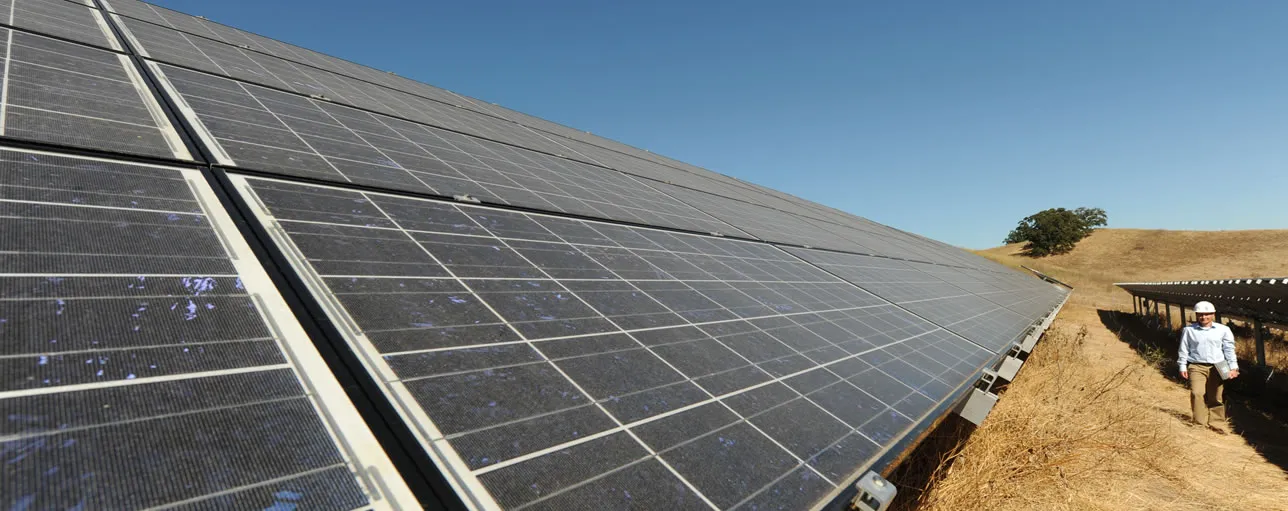We spoke to Melissa Leymon, Manager Marketing Programs about the importance of partnerships, remaining agile during the covid-19 pandemic and why R&D funding needs to increase to support clean energy goals.
Melissa Leymon: “Today’s technologies cannot get us to our target, particularly the last 15% to 20% of carbon-emitting resources. We have called for information to identify relevant new and early-stage technologies and are partnering with Sandia National Laboratory on research and development (R&D) to help bridge the gap to 100% emissions-free. Together, we will progress projects on energy resiliency and clean energy technologies. An early one will research new technology that enhances power-system performance, reduces cost, and ensures grid resilience and sustainability. Projects with Sandia will aim to bridge gaps, address technical barriers, and enable large-scale deployment of power-system technologies.
Behind-the-meter technologies for customers to understand how and when they use energy are critical. They can then partner with energy service providers to manage and reduce energy use more effectively. New technologies are key because energy efficiency must still be cost-effective when planning for resources to meet system reliability requirements.
Legislation is also a key driver of the energy transition. The State of New Mexico requires public utilities like PNM to achieve 5% savings off 2020 retail sales by 2025, and will set higher targets through to 2030. The law authorizes up to a 66% increase in utility spending on energy-efficiency programs.
We support public policies encouraging innovation towards the cleaner energy future that we can build with the right policies in place. Energy efficiency is critical to the transition. Since 2007, PNM’s energy-efficiency programs have reduced electricity use enough to conserve 1,465,819,802 gallons of water and prevented 3,087,648 metric tons of carbon emissions. To ensure that the transition reaches its full potential, policymakers should increase R&D funding and support for the range of technologies needed to achieve clean energy goals, including energy efficiency.
We are now updating our Integrated Resource Plan (IRP) incorporating a 20-year energy-efficiency plan. We constantly look at our program portfolio to review effectiveness and opportunity. We are always researching new programs to ensure we have the right blend for residential and commercial customers to meet goals established by the state. Investment in technologies to help customers manage energy use is a key component of accelerating the energy transition, as is investing in cost-effective storage solutions. Many long-term plans incorporate storage resources to balance the energy curve throughout the day.
Partnerships are vital to accelerating the transition. Often, the most successful projects for our commercial customers involve matching their operational expertise with our industry know-how to develop a customized solution for optimizing management of their energy consumption.
In 2019 we created PNM Solar Direct™ to help cities and businesses achieve their sustainability targets. This trailblazing partnership with New Mexico cities and counties, Western New Mexico University, and retailer Walmart, includes the building of a 50 MW solar field on Jicarilla Apache Nation land that serves the PNM large customers voluntarily subscribed to the program and is completely funded by the nine participants.
When the COVID-19 crisis began, we reviewed our entire energy efficiency portfolio to assess which programs could continue unchanged and which would need revising during this unprecedented time. Some changes – like offering contactless collections for our refrigerator recycling program – were relatively simple to implement. Others took more scoping, but we were the first utility in the American Southwest to offer virtual home-energy assessments. While it is too early to assess long-term impacts on our program portfolio, customers will face prolonged financial impacts. So, the programs’ importance will endure. COVID-19 has meant finding new ways to make quick changes to continue providing critical electricity services when other businesses were shut down. To protect our teams and create safe working environments in the crisis, we have implemented and adapted previously developed pandemic plans. Office employees transitioned almost overnight to an at-home workforce implementing virtual, contactless customer-support, including energy-efficiency programs.
During this time, we have remained focused on our long-term strategic goals around the clean energy transition, gaining regulatory approvals for abandoning and replacing one of our largest coal plants and now moving forward on our IRP. Retaining long-term focus on our goal and taking a nimble and adaptable approach to integrate new solutions, will be key to achieving a clean energy future.”

